Abstract
We examined the effects of noncontingent and contingent protective equipment as treatment for self-injurious hand mouthing exhibited by 2 individuals with profound mental retardation. Results of a functional analysis assessment revealed that neither subject's self-injury was maintained by social reinforcement: One subject's self-injury was cyclical in nature; the other's occurred during all assessment conditions but most frequently when left alone. In the noncontingent-equipment condition, oven mitts were placed on the individual's hands at the beginning of a session and remained on throughout. In the contingent-equipment condition, the mitts were briefly placed on the individual's hands following occurrences of hand mouthing. For 1 subject, noncontingent mitts produced a large decrease in the rate of hand mouthing and contingent mitts produced similar results following a return to baseline. Hand mouthing was also reduced in the 2nd subject, but this individual was exposed only to the contingent-equipment condition (i.e., there was no prior history with the noncontingent-equipment condition). These results suggest either a punishment or a time-out interpretation rather than an extinction interpretation to account for the behavior-reducing effects of contingent protective equipment on self-injury.
Full text
PDF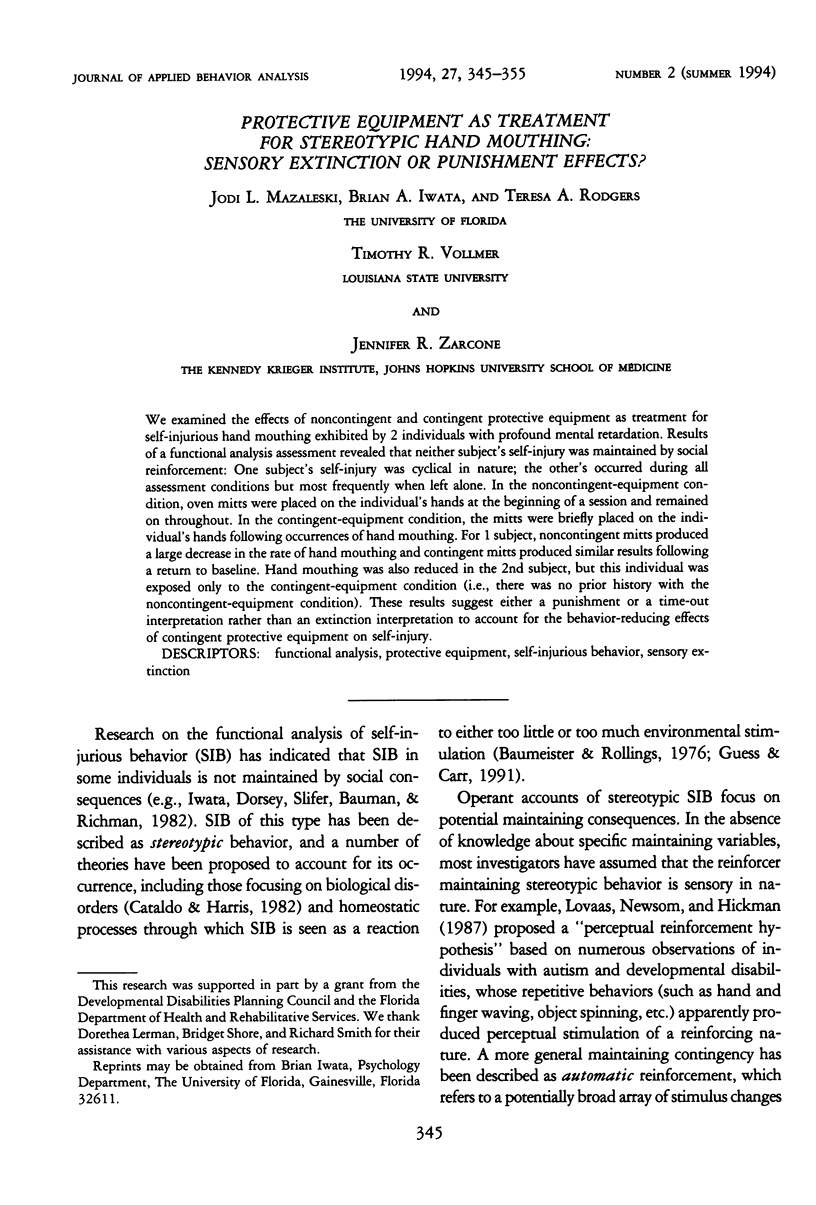
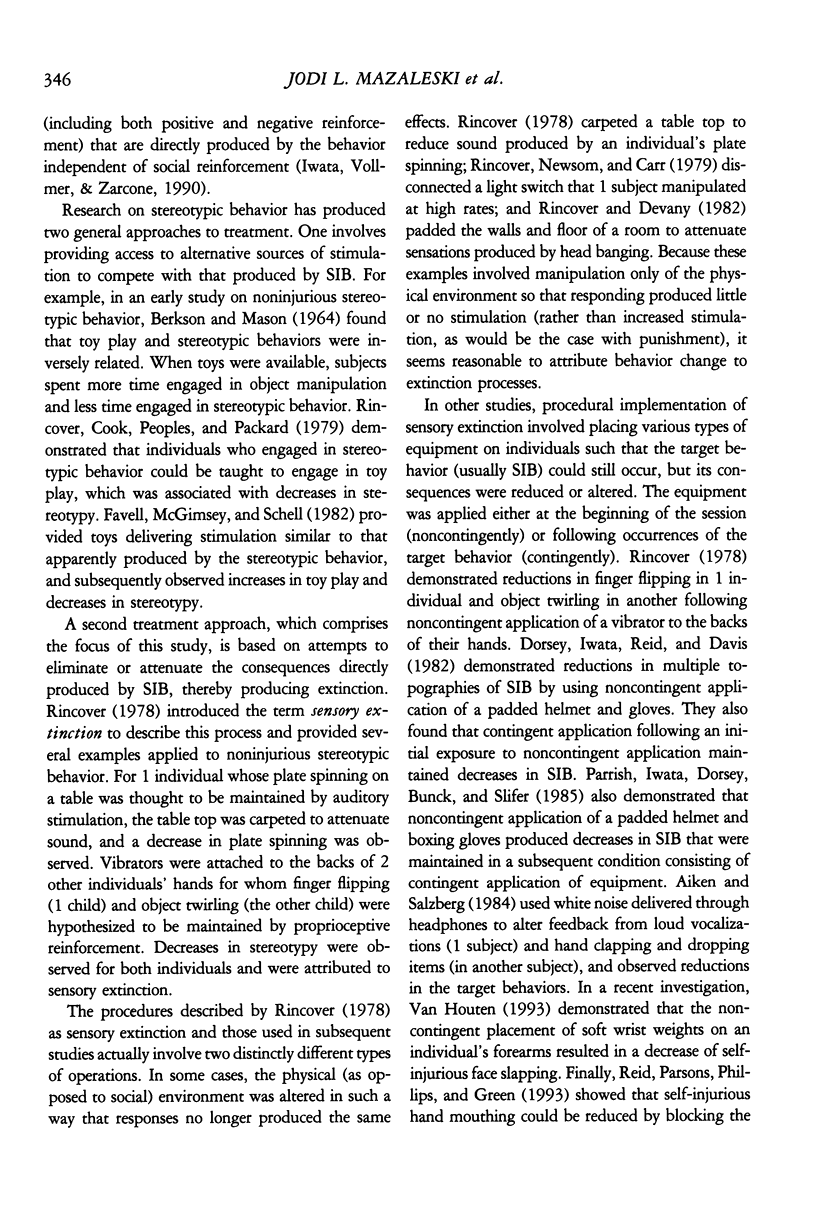
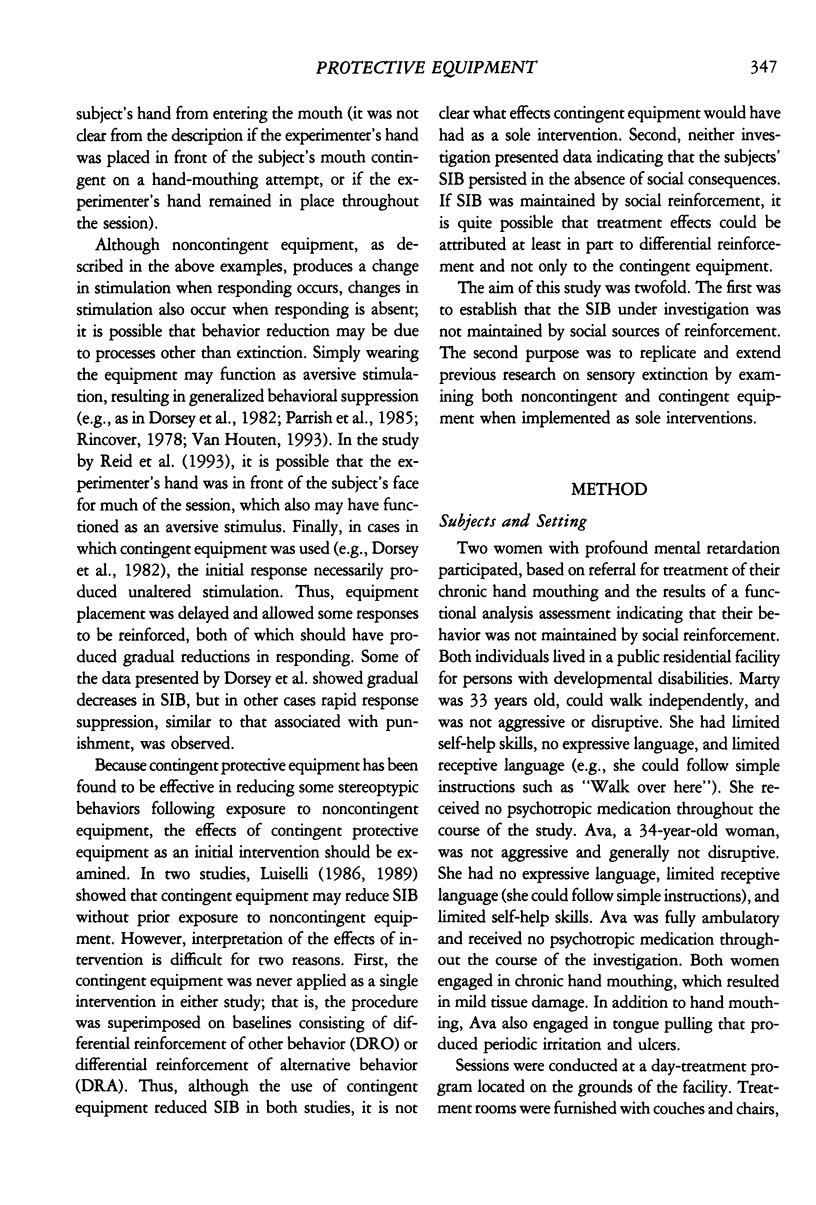
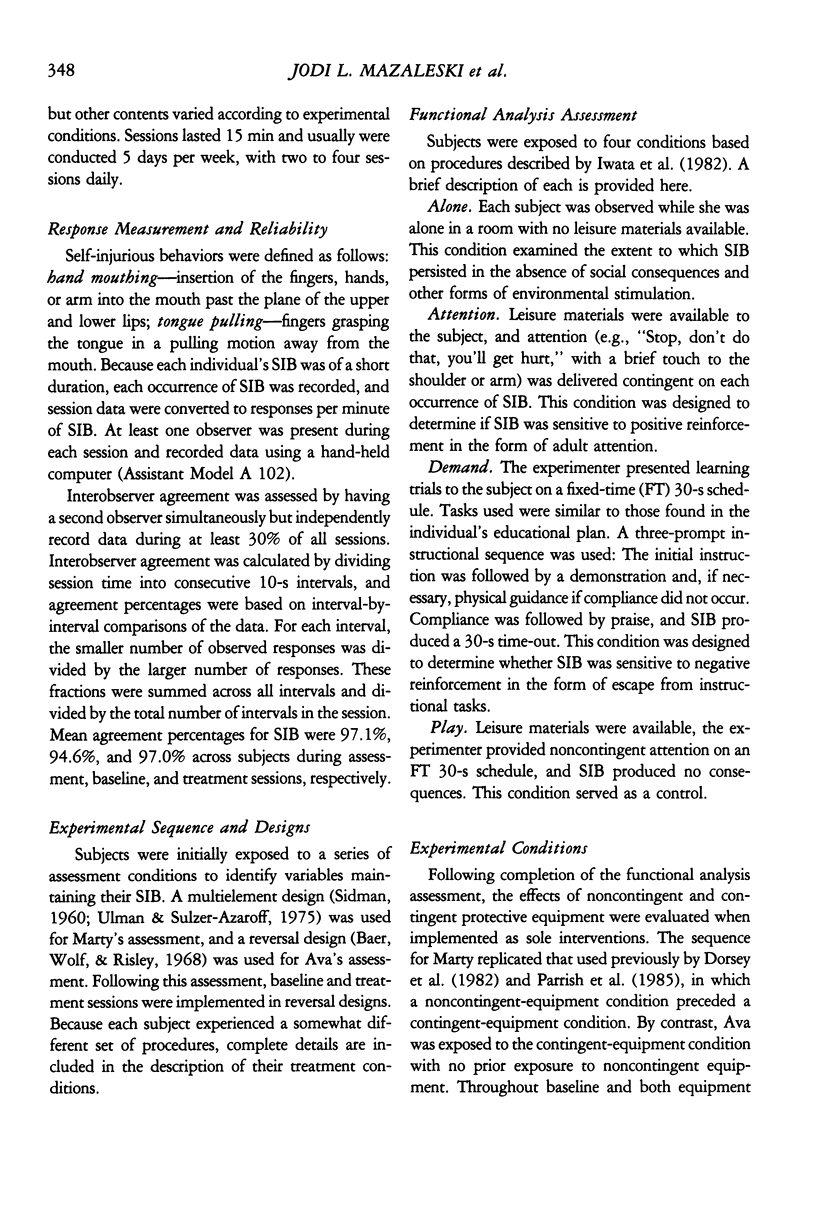
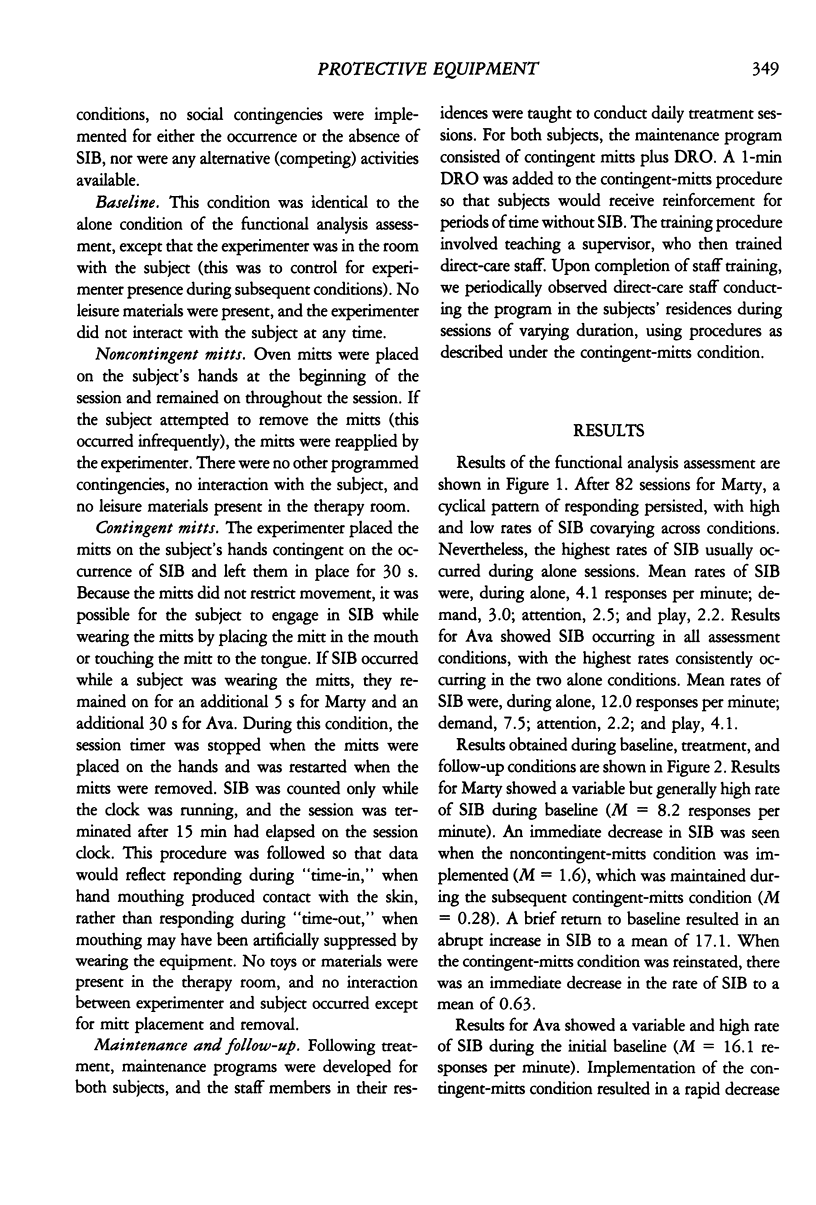
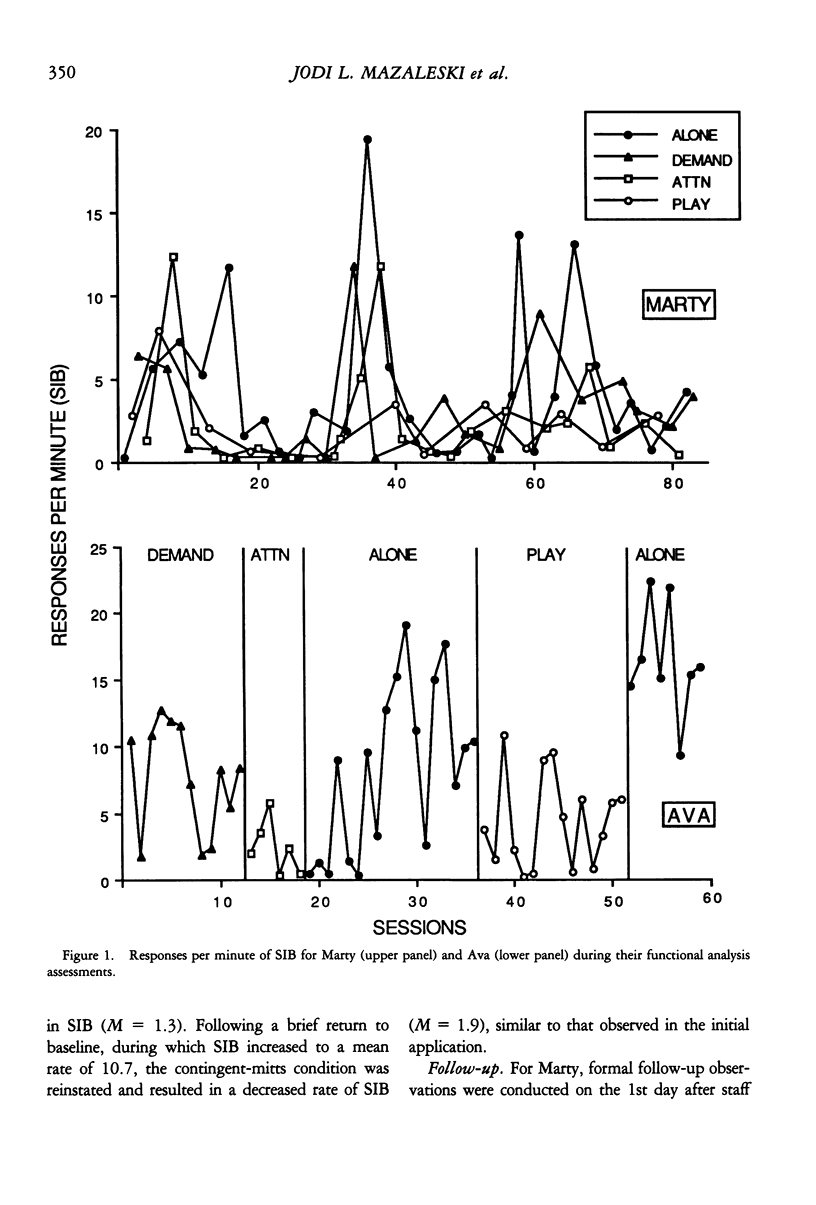
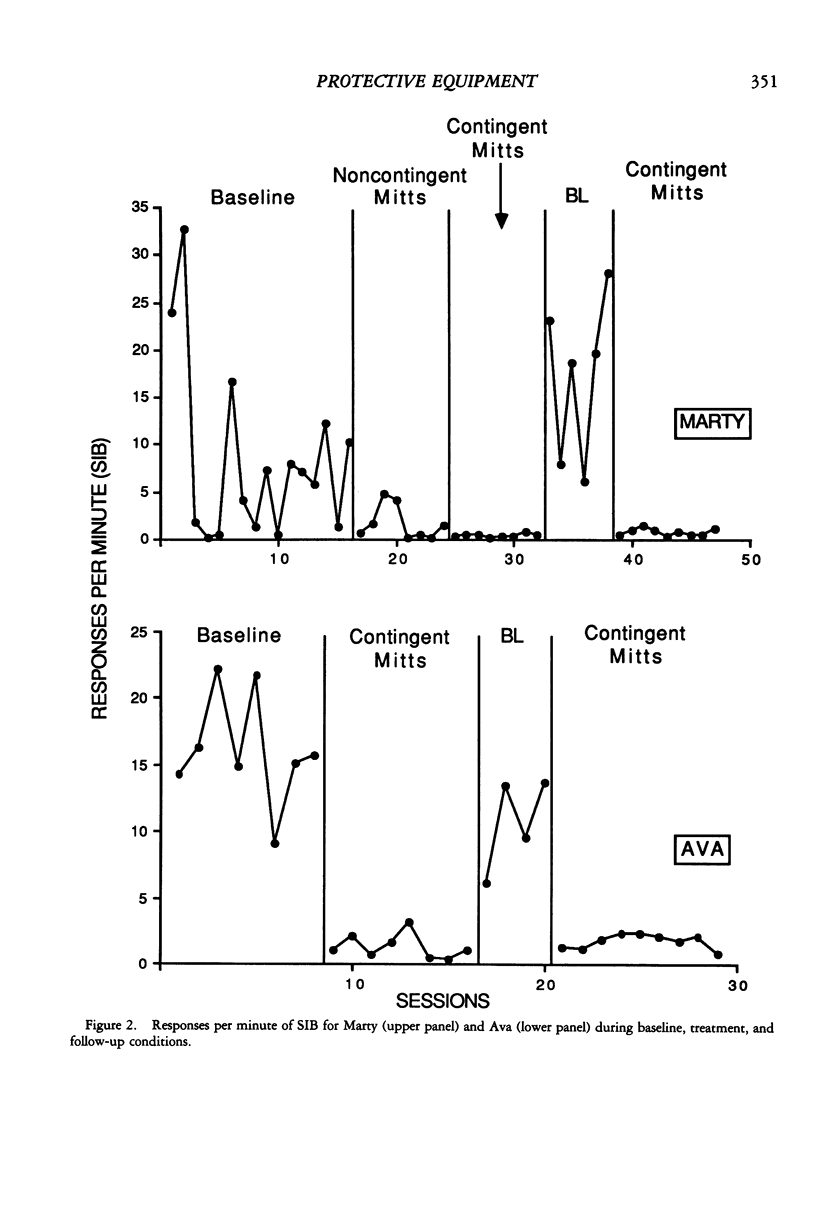
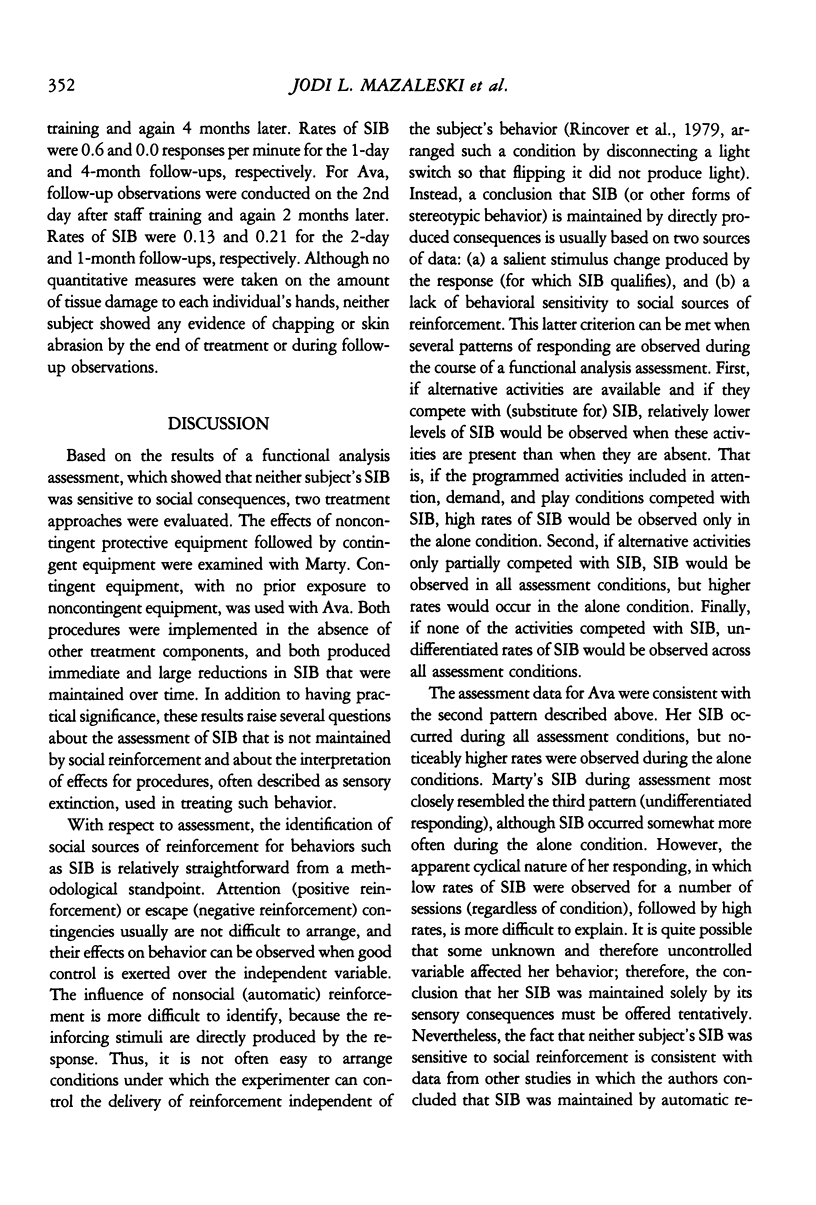
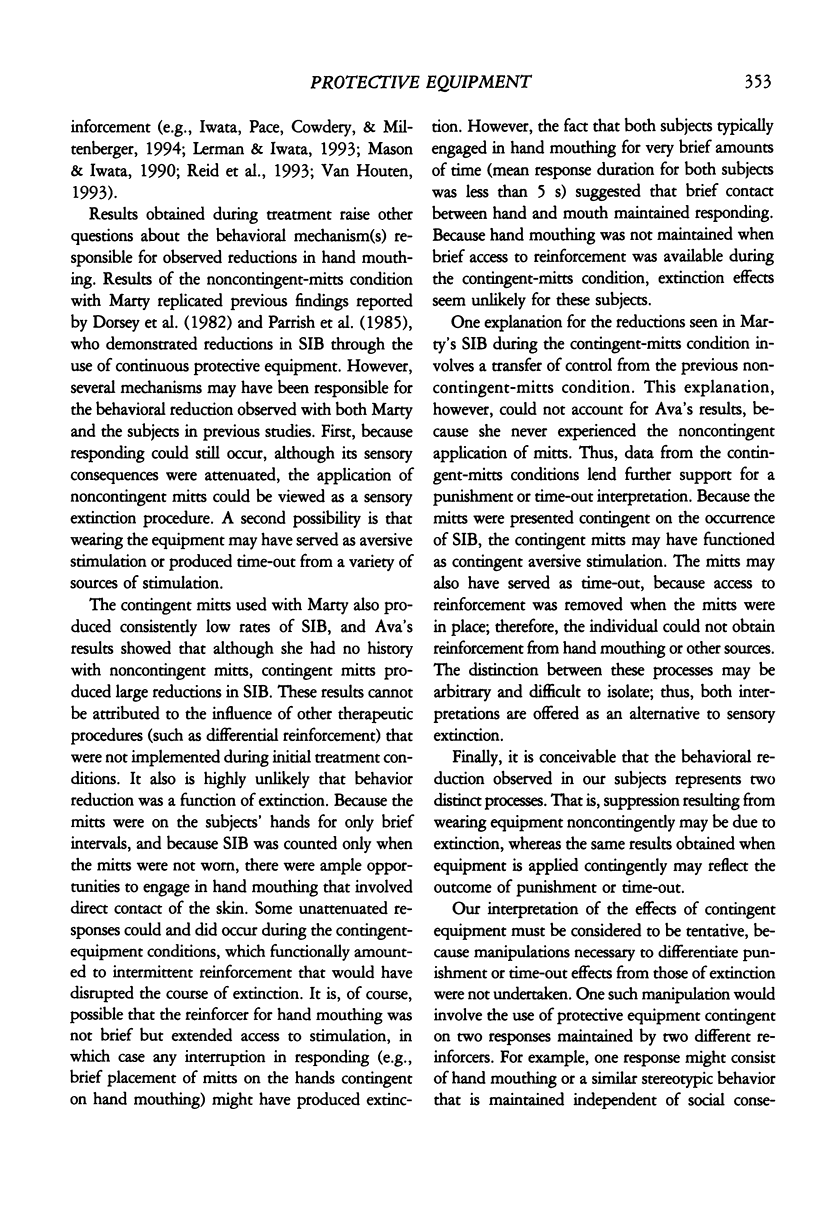
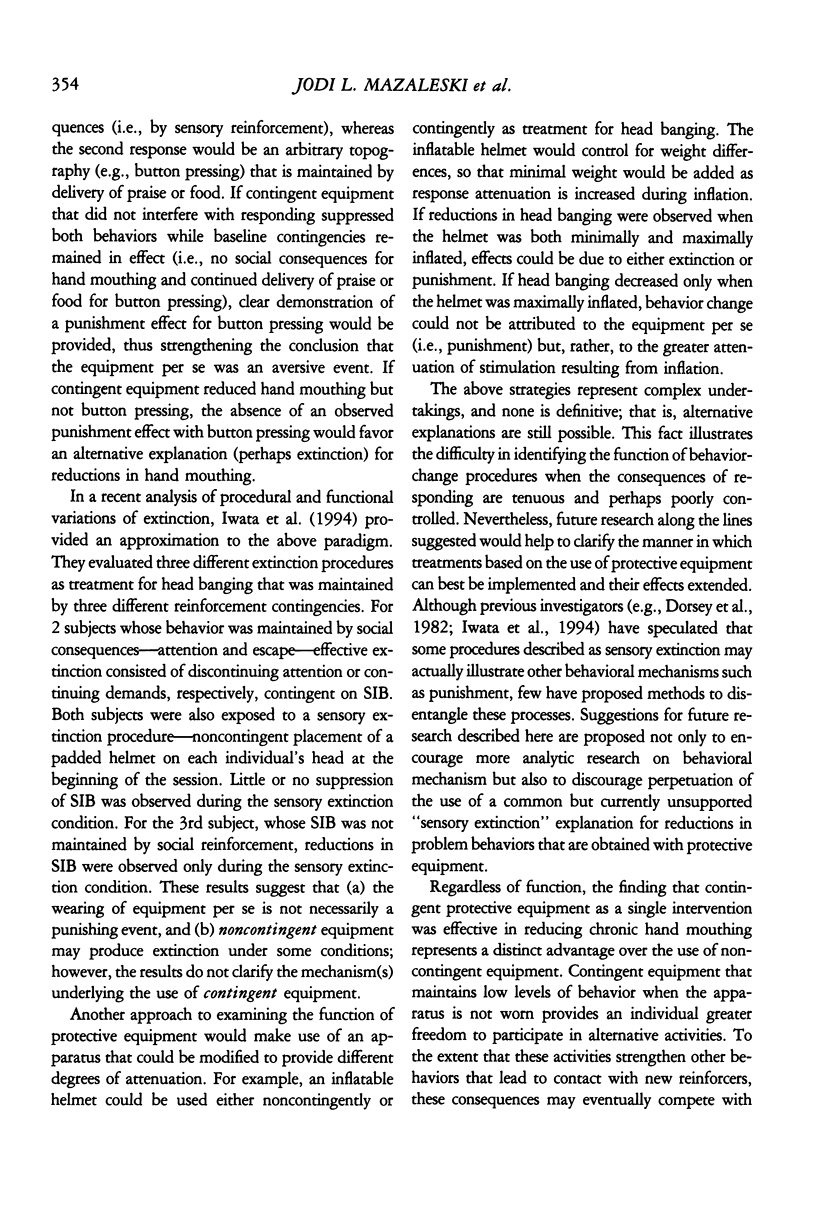
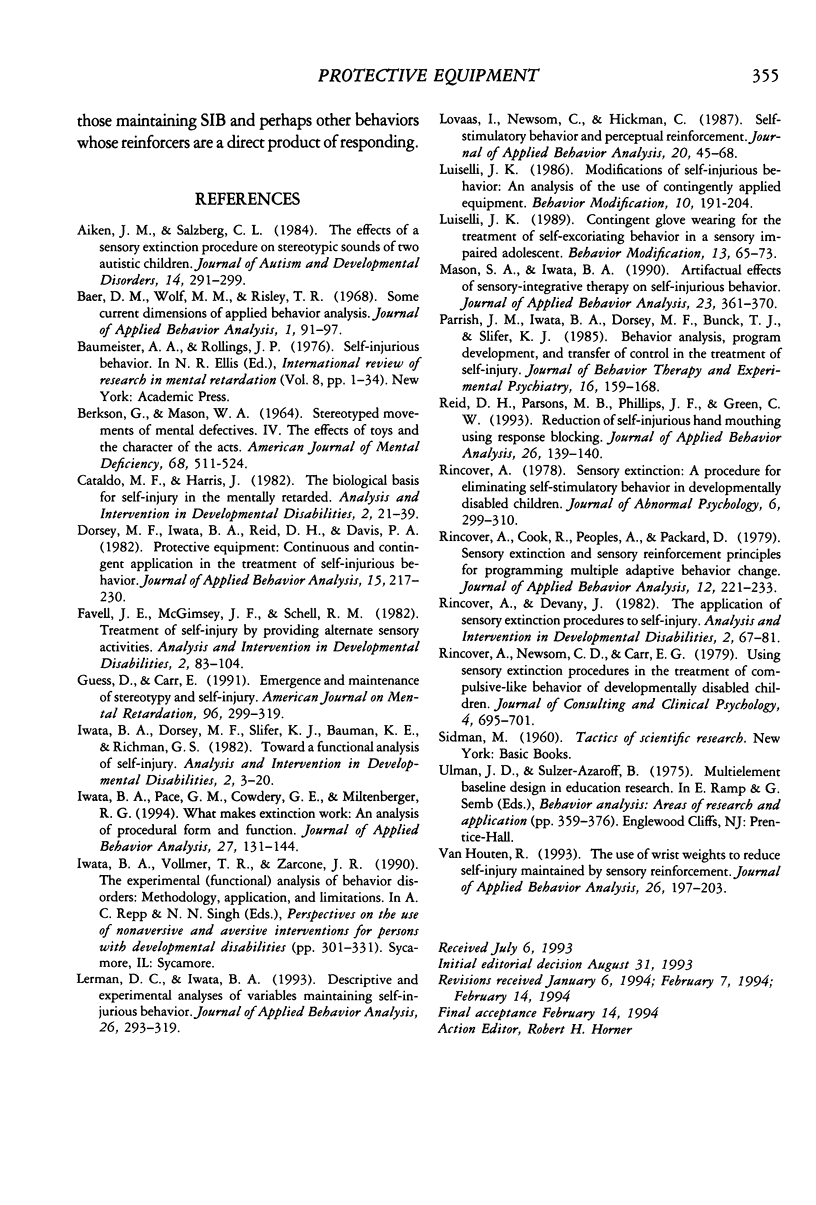
Selected References
These references are in PubMed. This may not be the complete list of references from this article.
- Aiken J. M., Salzberg C. L. The effects of a sensory extinction procedure on stereotypic sounds of two autistic children. J Autism Dev Disord. 1984 Sep;14(3):291–299. doi: 10.1007/BF02409580. [DOI] [PubMed] [Google Scholar]
- BERKSON G., MASON W. A. STEREOTYPED MOVEMENTS OF MENTAL DEFECTIVES. IV. THE EFFECTS OF TOYS AND THE CHARACTER OF THE ACTS. Am J Ment Defic. 1964 Jan;68:511–524. [PubMed] [Google Scholar]
- Baer D. M., Wolf M. M., Risley T. R. Some current dimensions of applied behavior analysis. J Appl Behav Anal. 1968 Spring;1(1):91–97. doi: 10.1901/jaba.1968.1-91. [DOI] [PMC free article] [PubMed] [Google Scholar]
- Dorsey M. F., Iwata B. A., Reid D. H., Davis P. A. Protective equipment: continuous and contingent application in the treatment of self-injurious behavior. J Appl Behav Anal. 1982 Summer;15(2):217–230. doi: 10.1901/jaba.1982.15-217. [DOI] [PMC free article] [PubMed] [Google Scholar]
- Guess D., Carr E. Emergence and maintenance of stereotypy and self-injury. Am J Ment Retard. 1991 Nov;96(3):299–344. [PubMed] [Google Scholar]
- Iwata B. A., Pace G. M., Cowdery G. E., Miltenberger R. G. What makes extinction work: an analysis of procedural form and function. J Appl Behav Anal. 1994 Spring;27(1):131–144. doi: 10.1901/jaba.1994.27-131. [DOI] [PMC free article] [PubMed] [Google Scholar]
- Lerman D. C., Iwata B. A. Descriptive and experimental analyses of variables maintaining self-injurious behavior. J Appl Behav Anal. 1993 Fall;26(3):293–319. doi: 10.1901/jaba.1993.26-293. [DOI] [PMC free article] [PubMed] [Google Scholar]
- Lovaas I., Newsom C., Hickman C. Self-stimulatory behavior and perceptual reinforcement. J Appl Behav Anal. 1987 Spring;20(1):45–68. doi: 10.1901/jaba.1987.20-45. [DOI] [PMC free article] [PubMed] [Google Scholar]
- Luiselli J. K. Contingent glove wearing for the treatment of self-excoriating behavior in a sensory-impaired adolescent. Behav Modif. 1989 Jan;13(1):65–73. doi: 10.1177/01454455890131004. [DOI] [PubMed] [Google Scholar]
- Luiselli J. K. Modification of self-injurious behavior. An analysis of the use of contingently applied protective equipment. Behav Modif. 1986 Apr;10(2):191–204. doi: 10.1177/01454455860102003. [DOI] [PubMed] [Google Scholar]
- Mason S. A., Iwata B. A. Artifactual effects of sensory-integrative therapy on self-injurious behavior. J Appl Behav Anal. 1990 Fall;23(3):361–370. doi: 10.1901/jaba.1990.23-361. [DOI] [PMC free article] [PubMed] [Google Scholar]
- Parrish J. M., Iwata B. A., Dorsey M. F., Bunck T. J., Slifer K. J. Behavior analysis, program development, and transfer of control in the treatment of self-injury. J Behav Ther Exp Psychiatry. 1985 Jun;16(2):159–167. doi: 10.1016/0005-7916(85)90052-7. [DOI] [PubMed] [Google Scholar]
- Reid D. H., Parsons M. B., Phillips J. F., Green C. W. Reduction of self-injurious hand mouthing using response blocking. J Appl Behav Anal. 1993 Spring;26(1):139–140. doi: 10.1901/jaba.1993.26-139. [DOI] [PMC free article] [PubMed] [Google Scholar]
- Rincover A., Cook R., Peoples A., Packard D. Sensory extinction and sensory reinforcement principles for programming multiple adaptive behavior change. J Appl Behav Anal. 1979 Summer;12(2):221–233. doi: 10.1901/jaba.1979.12-221. [DOI] [PMC free article] [PubMed] [Google Scholar]
- Rincover A., Newsom C. D., Carr E. G. Using sensory extinction procedures in the treatment of compulsivelike behavior of developmentally disabled children. J Consult Clin Psychol. 1979 Aug;47(4):695–701. doi: 10.1037//0022-006x.47.4.695. [DOI] [PubMed] [Google Scholar]
- Rincover A. Sensory extinction: a procedure form eliminating self-stimulatory behavior in developmentally disabled children. J Abnorm Child Psychol. 1978 Sep;6(3):299–310. doi: 10.1007/BF00924733. [DOI] [PubMed] [Google Scholar]
- Van Houten R. The use of wrist weights to reduce self-injury maintained by sensory reinforcement. J Appl Behav Anal. 1993 Summer;26(2):197–203. doi: 10.1901/jaba.1993.26-197. [DOI] [PMC free article] [PubMed] [Google Scholar]


